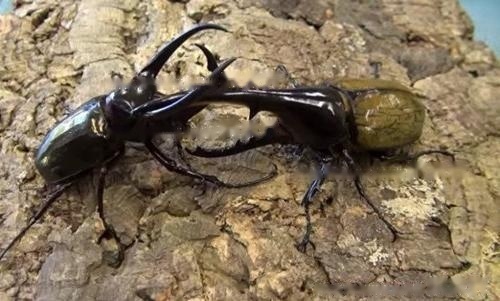The rhinoceros beetle is one of the largest insects in the world and a treasure in the beetle collection. Then do you know the way to raise it? If you don't understand it, come and learn with the editor.

Halberd rhinoceros
The feeding method of larvae: Usually, the relative space of each larvae is better than 4-5 liters.
Separate rearing:
Each larva is housed in a separate container, which requires a lot of space but increases the chances of raising large individuals. The disadvantage is that such independent rearing will cause male and female larvae to affect pairing due to different emergence times.
Improvement method:
1. Each time the soil is changed, the old soil left in each box can be mixed with new soil and distributed to each feeder box.
2. At the middle stage of the third instar, mixed rearing, but the male and female individuals may lose some weight due to mixed breeding, but it will not be much worse.
Mixed breeding:
Although the space occupied is not much, the body size of the bred male and female will be much different, but the time of eclosion will not be The difference is very long, and the larval period is also shorter than that of single feeding.
Larval stage: about 14 months to 26 months.
Larvae ingredients: JiujiuChongyang humus + JiujiuCongyang fermented wood cutting ratio 1:1. Humidity can be a little more wet than breeding, and add a little wood.
Generally, halberds are mostly artificial breeding products, so it is necessary to pay attention to whether the adults have passed the dormant period before mating.
After the dormant period, the adults almost all start to feed. The touch method can be used to see if the adult worms have intimidating movements, and their claws have great grasping power. If there is, it means that the adult worms have passed the dormant period and can mate.
Feeding supplies: feeding box (large finishing box), humus, humus, adult climbing bark or wood chips, etc.
![[Dog Training 5] The training method of pet dog dining etiquette](/static/img/12192/12192_1.jpg)




